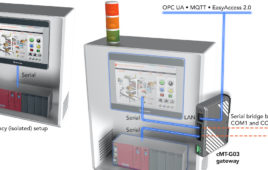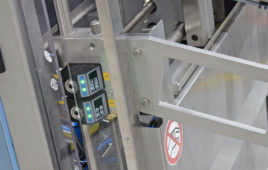 Santa Barbara, CA – A fully functional quantum computer is one of the holy grails of physics. Unlike conventional computers, the quantum version uses qubits (quantum bits), which make direct use of the multiple states of quantum phenomena. When realized, a quantum computer will be millions of times more powerful at certain computations than today’s supercomputers.
Santa Barbara, CA – A fully functional quantum computer is one of the holy grails of physics. Unlike conventional computers, the quantum version uses qubits (quantum bits), which make direct use of the multiple states of quantum phenomena. When realized, a quantum computer will be millions of times more powerful at certain computations than today’s supercomputers.
A group of UC Santa Barbara physicists has moved one step closer to making a quantum computer a reality by demonstrating a new level of reliability in a five-qubit array. Their findings will appear in the journal Nature.
Quantum computing is anything but simple. It relies on aspects of quantum mechanics such as superposition. This notion holds that any physical object, such as an atom or electron — what quantum computers use to store information — can exist in all of its theoretical states simultaneously. This could take parallel computing to new heights.
“Quantum hardware is very, very unreliable compared to classical hardware,” says Austin Fowler, a staff scientist in the physics department, whose theoretical work inspired the experiments of the Martinis Group. “Even the best state-of-the-art hardware is unreliable. Our paper shows that for the first time reliability has been reached.”
While the Martinis Group has shown logic operations at the threshold, the array must operate below the threshold to provide an acceptable margin of error. “Qubits are faulty, so error correction is necessary,” said graduate student and co-lead author Julian Kelly who worked on the five-qubit array.
“We need to improve and we would like to scale up to larger systems,” said lead author Rami Barends, a postdoctoral fellow with the group. “The intrinsic physics of control and coupling won’t have to change but the engineering around it is going to be a big challenge.”
The unique configuration of the group’s array results from the flexibility of geometry at the superconductive level, which allowed the scientists to create cross-shaped qubits they named Xmons. Superconductivity results when certain materials are cooled to a critical level that removes electrical resistance and eliminates magnetic fields. The team chose to place five Xmons in a single row, with each qubit talking to its nearest neighbor, a simple but effective arrangement.
“Motivated by theoretical work, we started really thinking seriously about what we had to do to move forward,” said John Martinis, a professor in UCSB’s Department of Physics. “It took us a while to figure out how simple it was, and simple, in the end, was really the best.”
“If you want to build a quantum computer, you need a two-dimensional array of such qubits, and the error rate should be below 1 percent,” said Fowler. “If we can get one order of magnitude lower — in the area of 10-3 or 1 in 1,000 for all our gates — our qubits could become commercially viable. But there are more issues that need to be solved. There are more frequencies to worry about and it’s certainly true that it’s more complex. However, the physics is no different.”
According to Martinis, it was Fowler’s surface code that pointed the way, providing an architecture to put the qubits together in a certain way. “All of a sudden, we knew exactly what it was we wanted to build because of the surface code,” Martinis said. “It took a lot of hard work to figure out how to piece the qubits together and control them properly. The amazing thing is that all of our hopes of how well it would work came true.”
Filed Under: M2M (machine to machine)




